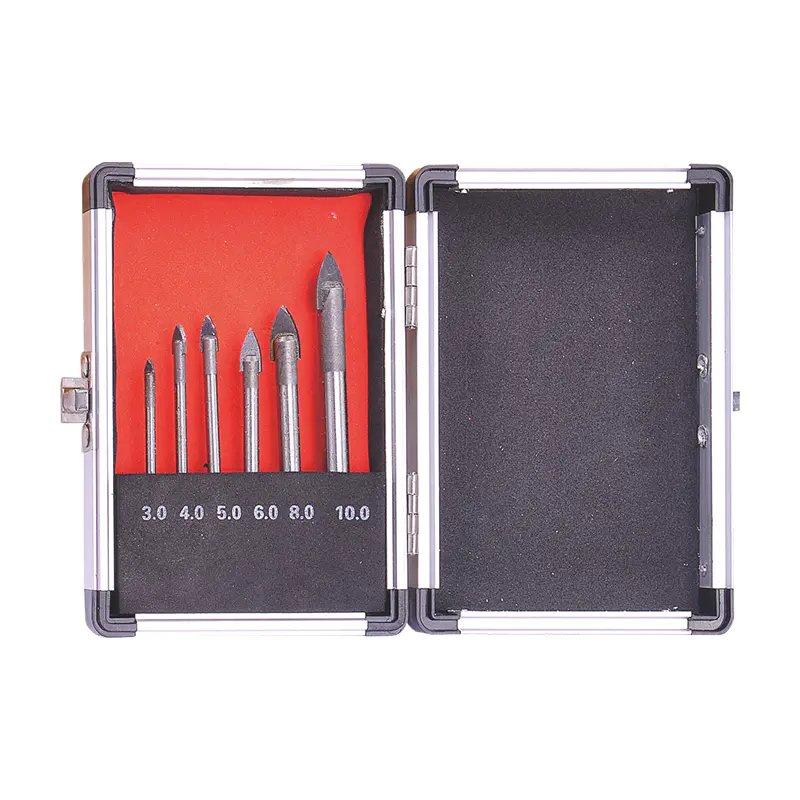2025-05-26
Understanding Why Slipping Occurs
Drilling into glass presents a unique challenge due to the material's extremely smooth and non-porous surface. Unlike wood or metal, glass lacks the texture needed for a drill bit to grip upon initial contact. This results in the common problem of slipping, particularly during the early moments of drilling. A Glass Drill Bit, though specifically designed for this material, can still skid if used without the proper techniques or preparation. This not only affects precision but also increases the risk of cracking or chipping the glass.

Start with a Guide for Stability
One of the effective ways to prevent a Glass Drill Bit from slipping is to create a guide or pilot point. This can be done by placing a small piece of masking tape, painter's tape, or even duct tape over the drilling area. The tape provides additional traction for the bit’s tip, helping it stay in position when pressure is applied. In some cases, marking an “X” with two strips of tape can offer better control. Once the bit has begun to penetrate the glass, the tape can remain in place to reduce surface vibrations.
Use a Center Punch or Template
Another solution is to lightly score the glass using a carbide scribe or make a small indentation with a center punch tool. This small notch gives the Glass Drill Bit a place to anchor and reduces lateral movement when drilling starts. For repeated tasks or precision work, a plastic or metal drilling guide (also called a jig or template) with a hole of the same size as the drill bit can be used to hold the bit steady in the desired position.
Slow Speeds and Gentle Pressure Matter
Drilling into glass should always be done at a slow, controlled speed. High rotational speed causes excessive friction, which not only increases the chance of slipping but also generates heat that can crack the glass. Apply gentle, consistent pressure—enough to keep the bit in contact with the surface without forcing it. Let the Glass Drill Bit do the work through its gradual grinding motion rather than aggressive pushing, which could increase instability.
Keep the Surface Wet and Cool
Lubricating the surface with water not only helps reduce heat buildup but can also decrease vibration and slippage. It’s advisable to use a sponge, spray bottle, or a small water dam around the drilling area to keep the bit and glass cool. Some users place a wet sponge underneath the glass or use putty to form a ring that holds a small pool of water in place. Cool temperatures help the bit stay on track and prevent glass from expanding or fracturing under stress.
Secure the Glass and Work Surface
An often-overlooked factor in slip prevention is ensuring the glass itself doesn’t move. The glass should be securely clamped or rested on a non-slip rubber mat over a solid workbench. Unstable surfaces contribute to drill wobble and slipping, even with techniques. A firm, motionless surface allows the Glass Drill Bit to apply its force precisely where intended.
Preparation and Patience Are Key
Avoiding slippage when using a Glass Drill Bit is not just about the tool itself, but also about the conditions under which it is used. Simple adjustments—like taping the surface, using guides, applying water, and controlling speed—can significantly improve safety and results. With a bit of preparation and a steady hand, clean and accurate holes in glass can be achieved without cracking or frustration.